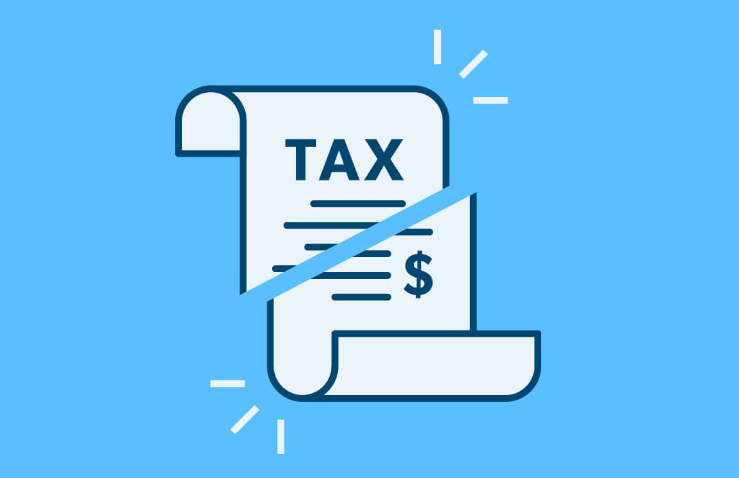Federal income taxes are an essential part of our financial responsibilities as citizens. These taxes are assessed on a progressive level, meaning that the more income you earn, the higher your effective tax rate becomes. In this article, we’ll provide an in-depth look at federal income taxes, focusing solely on federal income tax and excluding other payroll taxes like Social Security and Medicare.
The Four Key Components of Federal Income Taxation
When dealing with federal income taxation, there are four critical components that come into play when calculating your annual tax bill. These components are:
1. Gross Income
Your gross income is the total amount you earned throughout the year. For most employees, this includes the income reported on Form W-2 and/or 1099, along with additional income from sources such as business income, dividends, interest, capital gains, and royalties.
2. Above-the-Line Deductions
Above-the-line deductions are expenses that can be subtracted from your gross income before calculating your Adjusted Gross Income (AGI). Your AGI is a significant factor in determining various deductions and tax credits, making above-the-line deductions valuable.
3. Below-the-Line Deductions
Below-the-line deductions are subtracted from your AGI to determine your taxable income, which directly affects how much you pay in income tax. Reducing your AGI through below-the-line deductions can lead to lower tax liability.
4. Tax Credits
Tax credits are a taxpayer’s best friend. They directly reduce the amount of tax you owe, providing substantial savings. Understanding the types of tax credits available to you can help you optimize your tax return.
Now, let’s delve into each of these components in more detail.
Gross Income
Your gross income includes all the following sources:
- Wages, salaries, and tips are reported on Form W-2.
- Interest income (note that some interest, like that from municipal bonds, may be tax-exempt).
- Dividends, which can be classified as qualified or non-qualified, affect the tax rate.
- Refunds, credits, and offsets of state taxes.
- Alimony received during the year.
- Business income and losses, which are reported on Schedule C.
- Capital gains (long-term and short-term) from the sale of assets.
- Distributions from IRAs, annuities, and pension accounts.
- Miscellaneous income, such as rental income, royalties, and unemployment compensation.
Above-the-Line Deductions
Above-the-line deductions are expenses that can be subtracted from your gross income to calculate your AGI. Some common above-the-line deductions include:
- Educator expenses related to teaching activities.
- Contributions to qualifying health savings accounts.
- Certain job-related moving expenses.
- Contributions to retirement accounts like SEP IRA.
- Interest paid on student loans.
- Qualifying educational expenses, including tuition and fees.
Below-the-Line Deductions
Below-the-line deductions are subtracted from your AGI to determine your taxable income. Notable below-the-line deductions include:
- Medical and dental expenses exceeding 7.5% of AGI.
- State and local income taxes or sales taxes.
- Real estate taxes.
- Mortgage interest on your primary residence.
- Charitable donations.
- Certain casualty or theft losses.
- Unreimbursed job-related expenses.
It’s important to note that the availability of these deductions can vary based on your filing status and income level.
Tax Credits
Tax credits are a crucial aspect of reducing your tax liability. Some notable tax credits include:
- Earned Income Tax Credit (EITC): Beneficial for low-income earners, this credit can sometimes exceed your total tax bill, resulting in a refund.
- Child Tax Credit: Provides a credit for each dependent child.
- Credits for foreign taxes: Useful for individuals with international income.
- Credits for energy-saving materials or systems: Encourages energy-efficient choices.
Conclusion
Federal Income Taxes may seem complex, but understanding its key components is essential for managing your financial responsibilities. By optimizing your gross income, deductions, and tax credits, you can minimize your tax liability and make the most of your financial resources. In the following sections, we’ll explore each of these concepts in greater detail, helping you navigate the intricacies of federal income taxes effectively. You can also check the federal poverty level.
Frequently Asked Questions (FAQs)
What are federal income taxes, and why do I have to pay them?
Federal income taxes are levied by the U.S. government on your income, including wages, investments, and various other sources. These taxes fund government programs and services, such as infrastructure, healthcare, and education.
How are federal income taxes calculated?
Federal income taxes are calculated based on a progressive tax system, where higher-income earners pay a higher percentage of their income in taxes. Various deductions, credits, and exemptions can affect your final tax liability.
What’s the difference between gross income and taxable income?
Gross income is the total amount you earned before any deductions. Taxable income is your gross income minus allowable deductions. Your federal income tax is based on your taxable income.
What are “above-the-line” deductions, and why are they important?
Above-the-line deductions are expenses that can be deducted from your gross income before calculating your Adjusted Gross Income (AGI). They are essential because your AGI affects your eligibility for various deductions and tax credits.
What are “below-the-line” deductions, and how do they impact my taxes?
Below-the-line deductions are expenses that are subtracted from your AGI to determine your taxable income. These deductions directly affect how much you pay in federal income tax, as they lower your taxable income.
Can you explain how tax credits work?
Tax credits are direct reductions in the amount of federal income tax you owe. Unlike deductions, which reduce your taxable income, tax credits lower your actual tax liability dollar-for-dollar.
What is the Earned Income Tax Credit (EITC)?
The Earned Income Tax Credit (EITC) is a refundable tax credit designed to assist low-to-moderate-income individuals and families. It can result in a refund, even if you don’t owe any federal income tax.
How does the Child Tax Credit benefit families?
The Child Tax Credit provides a credit for each dependent child. This credit can reduce your federal income tax liability, and in some cases, you may receive a refund if the credit exceeds your tax bill.
How do I determine whether to take the standard deduction or itemize deductions?
You can choose to either take the standard deduction or itemize deductions on your tax return. The decision should be based on which option results in a larger deduction. Generally, individuals with significant deductible expenses choose to itemize, while others opt for the standard deduction.
Are there any deductions or credits available for education expenses?
Yes, there are tax deductions and credits available for education expenses, such as the Lifetime Learning Credit and the American Opportunity Credit. These credits can help offset the costs of higher education.






